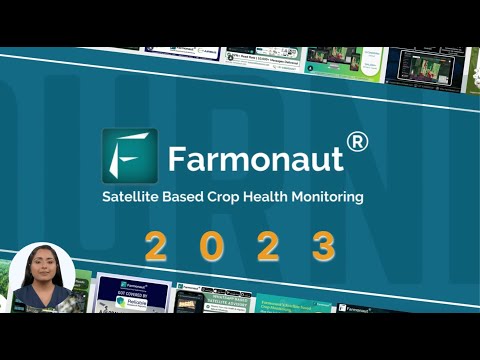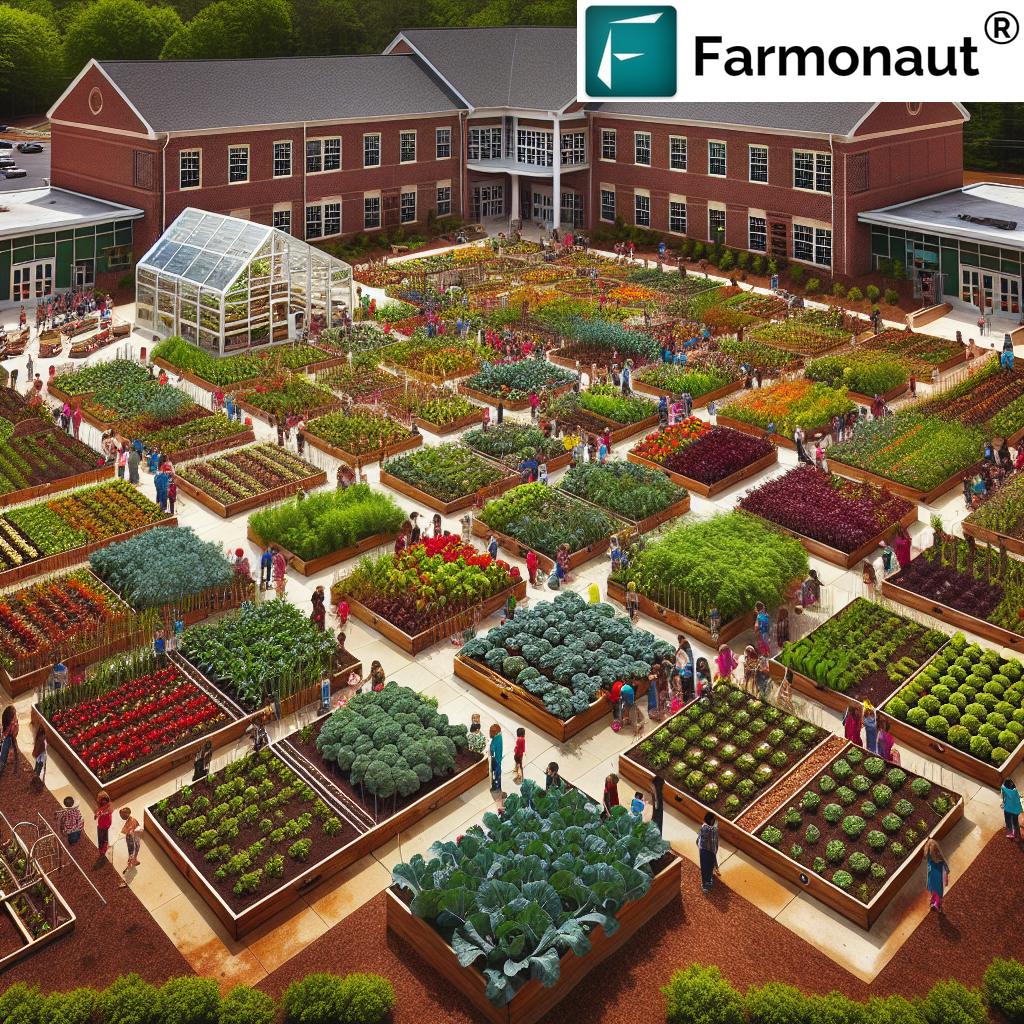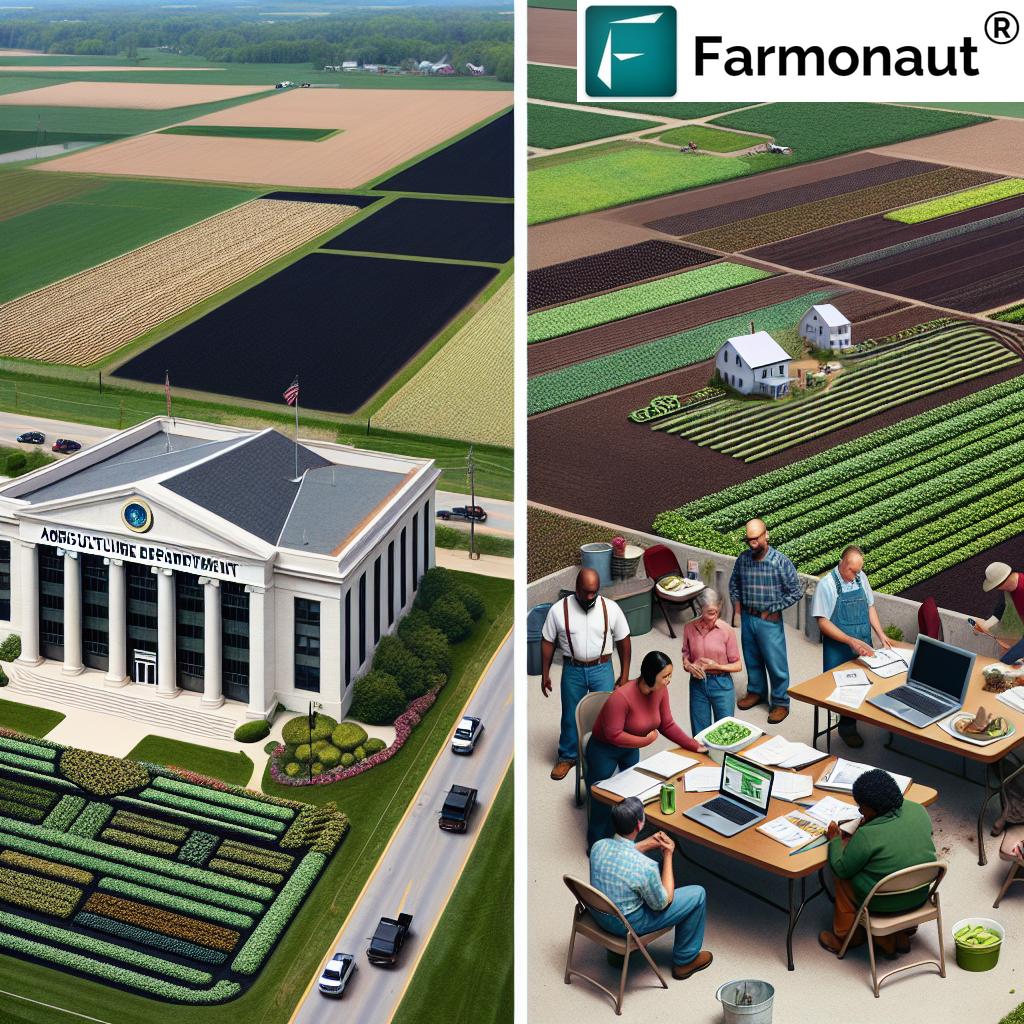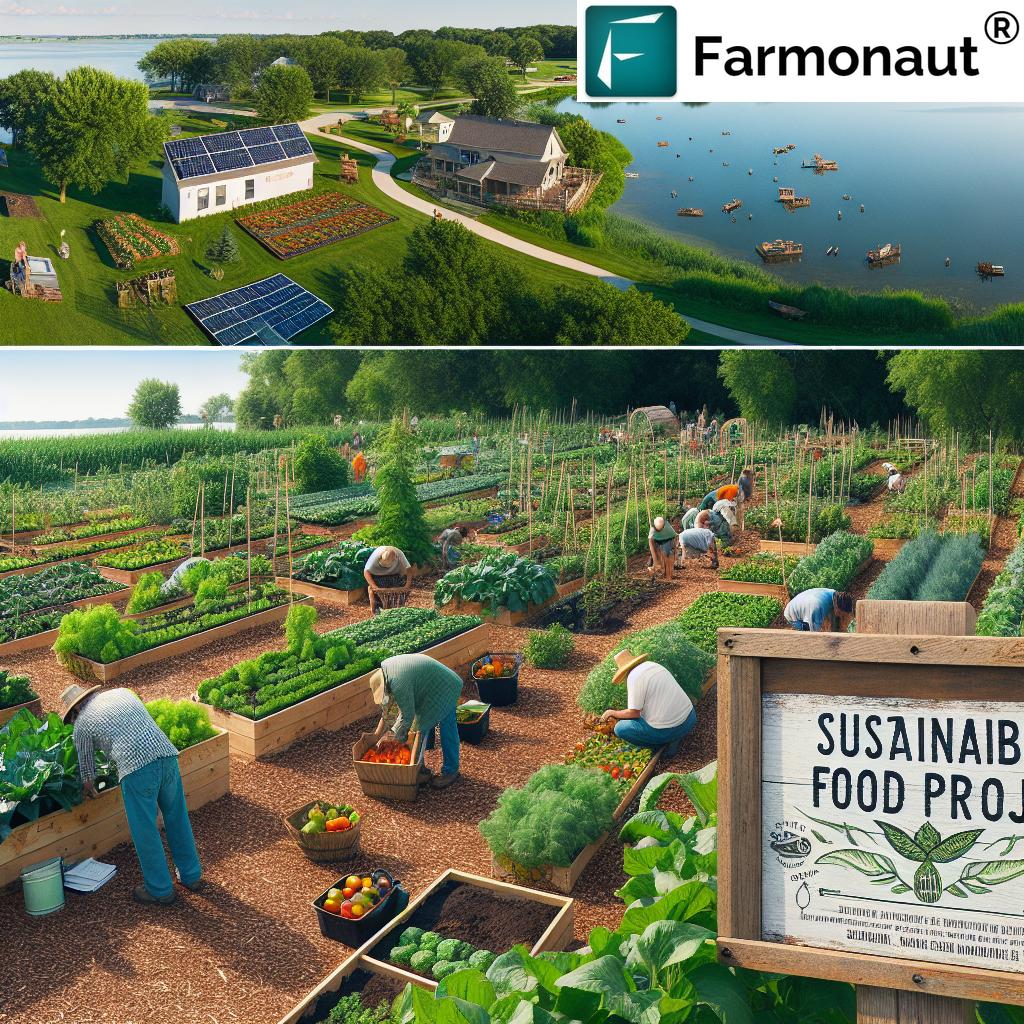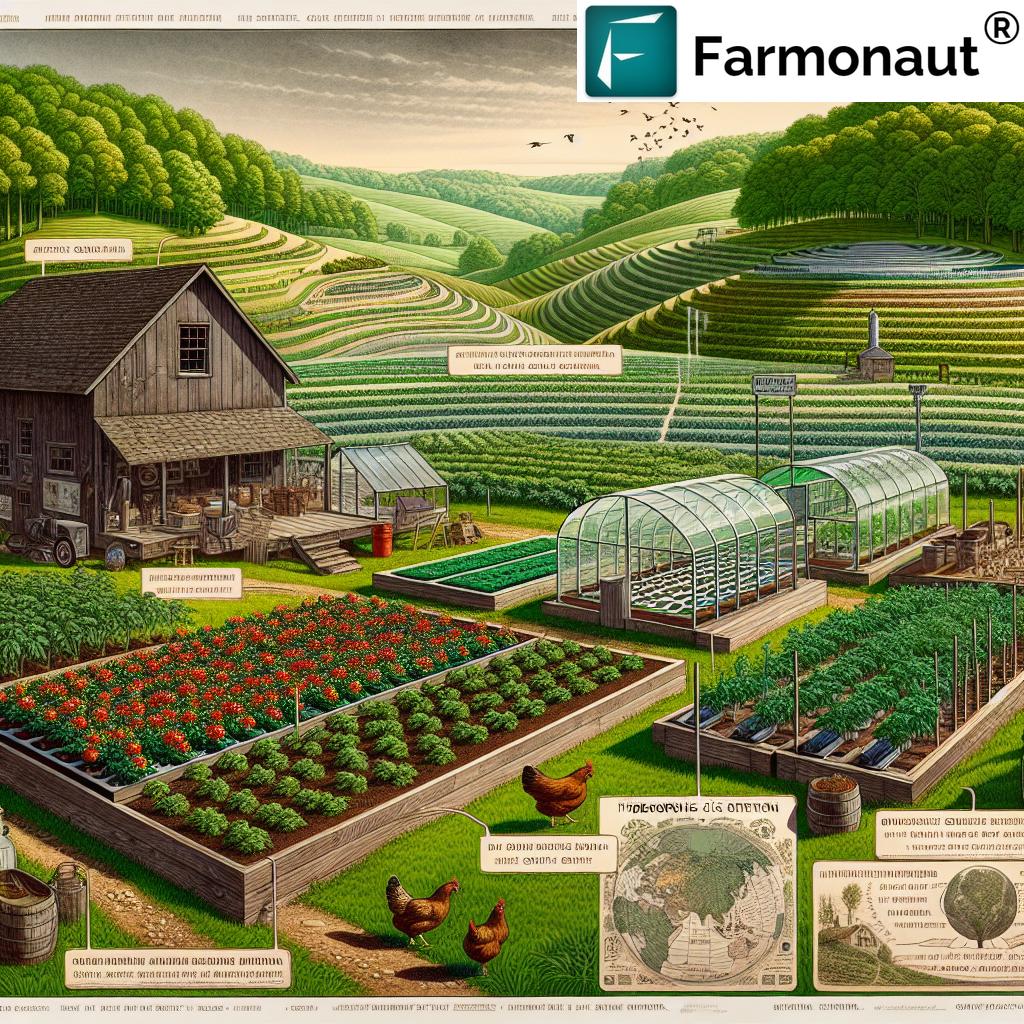From Ranch to Bank: Pioneering a Century of Agricultural Legacy in Nebraska’s North Platte Valley

“The North Platte Valley’s agricultural legacy spans over 100 years, encompassing ranching in 4 states: Nebraska, Colorado, Texas, and New Mexico.”
In the heart of America’s heartland, where the North Platte River carves its path through the Nebraska Sandhills, a remarkable story of resilience, adaptability, and agricultural innovation unfolds. This is the tale of Angelina “Ann” S. Wells, a centenarian whose life journey mirrors the evolution of farming and ranching in the American West. From the coal mines of Colorado to the vast ranches of Nebraska, Ann’s story is a testament to the enduring spirit of those who have shaped our nation’s agricultural heritage.
As we delve into this inspiring narrative, we’ll explore how the landscape of American agriculture has transformed over the past century, and how pioneers like Ann have played a crucial role in shaping the North Platte farming community. We’ll also examine how modern technologies, such as those offered by Farmonaut, are continuing to revolutionize the industry, building upon the legacy of these early innovators.
Early Beginnings: From New Mexico to Colorado
Ann’s story begins in the small town of Swastika, New Mexico, where she was born on February 19, 1925. The daughter of Pete and Celina Ruiz, Ann’s early years were marked by the challenges and opportunities that defined life in the American Southwest during the early 20th century.
As the family moved through various Colorado towns, including Berwind and Turner, they eventually settled in Trinidad, where Ann’s father owned a coal mine. This early exposure to the rugged industries that shaped the West would prove invaluable in Ann’s later life, instilling in her a strong work ethic and adaptability that would serve her well in the years to come.
World War II and the Call to Service
After graduating from Trinidad High School in 1942, Ann’s life took an unexpected turn. With the United States fully engaged in World War II, she moved to Oakland, California, where she found work at the Naval Supply Center. This period of Ann’s life reflects a broader national trend, as women across the country stepped into roles traditionally held by men, supporting the war effort and demonstrating their capabilities in new and challenging environments.
It was during this time that Ann met Richard H. Wells, the man who would become her husband and partner in both life and business. Their marriage in 1947 marked the beginning of a new chapter, one that would see them return to Richard’s roots in Nebraska and embark on a journey that would span decades and transform the agricultural landscape of the North Platte Valley.
Returning to the Heartland: Establishing Roots in Nebraska
In 1952, Ann and Richard made the pivotal decision to move back to Richard’s hometown of Stapleton, Nebraska. This move would prove to be the foundation of their agricultural legacy, as they immersed themselves in the family business of ranching and farming. The North Platte Valley, with its rich soil and abundant water resources, provided the perfect setting for their agricultural endeavors.
As they established their roots in the Nebraska Sandhills, Ann and Richard faced the challenges that all farmers and ranchers encounter: unpredictable weather, fluctuating market prices, and the constant need to adapt to new technologies and practices. However, their determination and innovative spirit allowed them to thrive in this demanding environment.
Diversification: From Ranch to Bank
In 1967, Ann and Richard made a bold move that would further cement their place in the local community. They purchased the State Bank of Bartley, expanding their influence beyond the ranch and into the world of small-town banking in Nebraska. This diversification showcased their business acumen and understanding of the interconnected nature of agriculture and finance in rural communities.
For years, the couple divided their time between Stapleton and Bartley, managing both their agricultural interests and the bank. This dual focus allowed them to gain a unique perspective on the challenges and opportunities facing farmers and ranchers in the region.
“A centenarian’s life story covers 3 distinct career paths: ranching, World War II naval supply work, and small-town banking in Nebraska.”
Embracing Change: Adapting to Modern Agriculture
Throughout their years of managing Wells Enterprises, Ann and Richard demonstrated a remarkable ability to adapt to the changing landscape of American agriculture. From the introduction of new crop varieties to the implementation of advanced irrigation techniques, they remained at the forefront of agricultural innovation in the North Platte Valley.
Today, modern farmers can benefit from even more advanced technologies, such as those offered by Farmonaut. For instance, Farmonaut’s carbon footprinting tools allow farmers to monitor and reduce their environmental impact, a crucial consideration in today’s climate-conscious world. Similarly, Farmonaut’s fleet management solutions can help large-scale operations optimize their vehicle usage and improve overall efficiency.

A Century of Change: The Evolution of Farming in the North Platte Valley
To truly appreciate the scope of Ann’s life and the changes she witnessed in agriculture, let’s take a look at a timeline of key events and developments:
| Year | Personal Milestones | Agricultural/Community Developments |
|---|---|---|
| 1925 | Ann born in Swastika, New Mexico | Mechanization begins to transform farming in the Midwest |
| 1942 | Moves to California for Naval Supply work | World War II impacts agricultural production and labor |
| 1952 | Moves to Stapleton, Nebraska | Post-war boom in agricultural technology and productivity |
| 1967 | Purchases State Bank of Bartley | Increased focus on agricultural financing and rural development |
| 1980s-1990s | Expansion of Wells Enterprises | Introduction of precision agriculture techniques |
| 2000s-2020s | Continued involvement in community and ranch | Rise of digital agriculture and sustainable farming practices |
This timeline illustrates the remarkable changes that occurred in agriculture during Ann’s lifetime. From the early days of mechanization to the current era of precision agriculture and digital farming, the industry has undergone a profound transformation.
The Legacy of a Centenarian: Lessons for Modern Agriculture
As we reflect on Ann’s remarkable life, several key lessons emerge that are relevant to today’s farmers and agricultural professionals:
- Adaptability is key: Throughout her life, Ann demonstrated an ability to adapt to changing circumstances, from her wartime work to her transition into banking and ranching.
- Diversification can provide stability: By engaging in both agriculture and banking, Ann and Richard created a more resilient business model.
- Community involvement matters: Ann’s active participation in her community, from church activities to supporting local organizations, highlights the importance of strong rural communities in sustaining agriculture.
- Embrace innovation: From the early days of mechanization to modern precision agriculture techniques, staying current with technological advancements is crucial for success in farming.
Today, farmers can continue this tradition of innovation by leveraging cutting-edge technologies. For example, Farmonaut’s crop loan and insurance solutions can help farmers manage financial risks more effectively, while their product traceability tools can enhance transparency and trust in agricultural supply chains.
The Future of Agriculture in the North Platte Valley
As we look to the future of agriculture in the North Platte Valley and beyond, it’s clear that the industry will continue to evolve. Climate change, technological advancements, and changing consumer preferences will all play a role in shaping the landscape of farming and ranching.
However, the enduring spirit of innovation and resilience exemplified by pioneers like Ann Wells will undoubtedly continue to drive the industry forward. Modern farmers can honor this legacy by embracing new technologies and sustainable practices that will ensure the continued vitality of agriculture in the region.
For instance, Farmonaut’s large-scale farm management solutions can help operations of all sizes optimize their resources and improve productivity. Similarly, their crop plantation and forest advisory services can provide valuable insights for sustainable land management.
Celebrating a Life Well-Lived: Ann’s 100th Birthday
One of the most touching moments in Ann’s story is the celebration of her 100th birthday in Stapleton. Surrounded by family, friends, and community members, Ann was able to reflect on a century of experiences and accomplishments. The fact that she was able to fulfill her dream of dancing with her great-grandson, Harry, at this milestone event is a testament to her enduring spirit and zest for life.
This celebration not only honored Ann’s personal journey but also served as a reflection of the community’s respect for its agricultural heritage. It’s a reminder of the importance of preserving and sharing the stories of those who have shaped our rural landscapes and communities.
The Importance of Community and Tradition
Throughout her life, Ann remained deeply connected to her community. Her involvement in the Cornerstone Presbyterian Church, her support for local organizations, and her coordination of branding dinners at the Wells Ranch all speak to the importance of maintaining strong community ties in rural areas.
This sense of community is often what sustains agricultural regions through challenging times. It’s a reminder that farming is not just a business, but a way of life that is deeply intertwined with the social fabric of rural America.
Passion Beyond the Farm: Husker Football Fandom
Ann’s life wasn’t all work and no play. Her passionate support for Husker football, which even led to her being featured on the ‘Big Screen’ at a game, showcases the role that local traditions and pastimes play in bringing communities together. This enthusiasm for college football is a common thread that runs through many agricultural communities, providing a shared experience that transcends individual farms and ranches.
A Global Perspective: Travel and Personal Growth
Despite her deep roots in Nebraska, Ann and Richard’s travels around the world broadened their perspectives and likely informed their approach to business and life. The fact that Ann was able to climb the pyramids at the age of 70 speaks to her adventurous spirit and willingness to embrace new experiences.
This global outlook is increasingly important in today’s interconnected agricultural markets. Modern farmers must be aware of global trends and developments that can impact their operations, even from thousands of miles away.
The Role of Technology in Modern Agriculture
As we reflect on Ann’s century-long journey through the evolution of American agriculture, it’s worth considering how technology continues to transform the industry today. Companies like Farmonaut are at the forefront of this digital agricultural revolution, offering solutions that would have seemed like science fiction during Ann’s early years on the ranch.
For example, Farmonaut’s satellite-based crop health monitoring allows farmers to track the health of their fields in real-time, making informed decisions about irrigation, fertilization, and pest control. This level of precision was unimaginable a century ago, but it’s now becoming an essential tool for modern farmers looking to maximize yields while minimizing resource use.
Preserving Agricultural Heritage in a Digital Age
While embracing new technologies is crucial for the future of agriculture, it’s equally important to preserve the wisdom and traditions of the past. Ann’s story serves as a reminder of the importance of oral history and community memory in agricultural communities.
Modern farmers can honor this legacy by documenting their own experiences and sharing knowledge across generations. This blend of traditional wisdom and cutting-edge technology may well be the key to sustainable agriculture in the 21st century and beyond.
Conclusion: A Century of Growth, Innovation, and Community
As we conclude our journey through Ann Wells’ remarkable life and the century of agricultural evolution it represents, we’re left with a profound appreciation for the resilience, adaptability, and community spirit that have defined farming in the North Platte Valley.
From the early days of manual labor and horse-drawn plows to the era of satellite imaging and AI-driven farm management, the story of agriculture in this region is one of constant innovation and adaptation. Yet, through all these changes, the core values of hard work, community support, and stewardship of the land have remained constant.
Ann’s life story, spanning from the coal mines of Colorado to the ranches of Nebraska and the world of small-town banking, embodies the diverse experiences that have shaped the American agricultural landscape. Her ability to adapt to changing circumstances, embrace new opportunities, and maintain a strong connection to her community serves as an inspiration for current and future generations of farmers.
As we look to the future of agriculture in the North Platte Valley and beyond, we can draw strength from the legacy of pioneers like Ann Wells. By combining the wisdom of the past with the innovations of the present, we can ensure that agriculture remains a vibrant and sustainable industry for centuries to come.
In the spirit of Ann’s lifelong commitment to learning and adaptation, we encourage today’s farmers to explore the cutting-edge solutions offered by companies like Farmonaut. Whether it’s satellite-based crop monitoring, AI-driven advisory systems, or blockchain-based traceability solutions, these tools can help farmers carry forward the legacy of innovation that has defined agriculture in the North Platte Valley for over a century.
As we honor Ann’s memory and celebrate her contributions to the agricultural community, let us also look forward with hope and determination. The story of farming in the North Platte Valley is far from over, and with each new generation, it continues to evolve and flourish. Here’s to the next century of agricultural innovation, community spirit, and stewardship of the land that Ann Wells and her contemporaries held so dear.
FAQ Section
- Q: What were the main industries Ann Wells was involved in throughout her life?
A: Ann Wells was involved in coal mining (through her father’s work), World War II naval supply work, ranching, farming, and small-town banking in Nebraska. - Q: How did Ann and Richard Wells diversify their business interests?
A: They diversified by engaging in both ranching/farming and banking, purchasing the State Bank of Bartley in 1967 while maintaining their agricultural enterprises. - Q: What role did community involvement play in Ann’s life?
A: Ann was actively involved in her community, participating in church activities, supporting local organizations, and coordinating events like branding dinners at the Wells Ranch. - Q: How did Ann adapt to changes in the agricultural industry over her lifetime?
A: Ann demonstrated adaptability by embracing new farming techniques, diversifying into banking, and staying engaged with the evolving agricultural landscape throughout her century-long life. - Q: What lessons can modern farmers learn from Ann Wells’ life story?
A: Modern farmers can learn the importance of adaptability, diversification, community involvement, and embracing innovation from Ann’s life story.
Embrace the Future of Farming with Farmonaut
As we’ve explored the rich history of agriculture in the North Platte Valley through Ann Wells’ remarkable life, it’s clear that innovation has always been at the heart of successful farming. Today, Farmonaut continues this tradition by offering cutting-edge solutions for modern agricultural challenges.
Whether you’re managing a small family farm or overseeing large-scale agricultural operations, Farmonaut’s suite of tools can help you optimize your resources, increase productivity, and ensure sustainability for generations to come.
Ready to take your farming practices to the next level? Explore Farmonaut’s offerings:
For developers and businesses looking to integrate Farmonaut’s powerful satellite and weather data into their own systems, check out our API and API Developer Docs.
Join the Farmonaut Community
Earn With Farmonaut: Affiliate Program
Earn 20% recurring commission with Farmonaut’s affiliate program by sharing your promo code and helping farmers save 10%. Onboard 10 Elite farmers monthly to earn a minimum of $148,000 annually—start now and grow your income!
Farmonaut Subscriptions
By embracing the legacy of agricultural pioneers like Ann Wells and leveraging the power of modern technology, we can ensure a bright future for farming in the North Platte Valley and beyond. Join us in shaping the next century of agricultural innovation!




